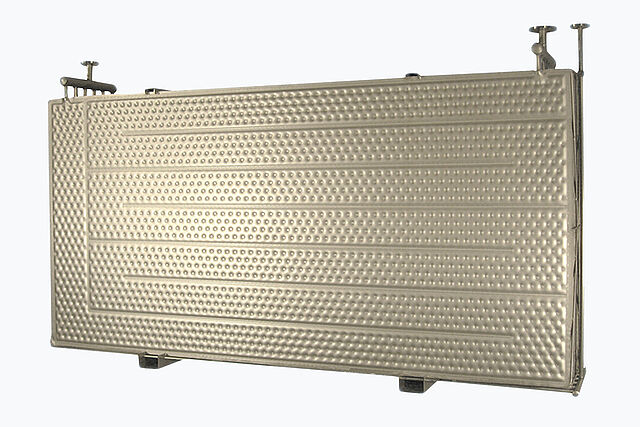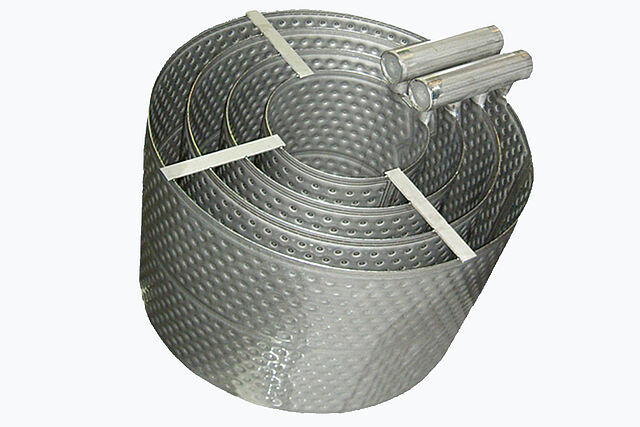
Cool corrosive, bioactive or contaminated liquids?
Our customers use our seawater-resistant or high-alloy stainless steel dimple plate heat exchange system in cases of seawater or bioactive liquids. In heat recovery applications, our system of large heat recovery plates are installed into recirculation or existing tanks. You have the advantage of being able to clean this open system at any time.
Finally, the large heat exchanger surfaces ensure reliable process control with controlled temperature management. Consequently, the U-values are only insignificantly affected by dirt or a coating on the plates. In the long run, this results in significantly better efficiencies compared to compact external plate heat exchanger systems of closed design. Even in the event of contamination, our BUCO heat exchange systems guarantee a high level of performance stability. The open design of the systems allows quick inspections as well as uncomplicated cleaning procedures and thus a high degree of operational safety.
If necessary, the cooling process can be further stabilised by a slight build-up of ice. This performance reserve consequently gives you security. Individual designs in terms of dimensions, shape and material allow flexible use in numerous applications and thus expand the common standard.
Our heat exchanger systems made of dimple plate heat exchangers can be used for fluids with fluctuating temperatures or quantities. A variable welded construction of the pillow plate heat exchanger systems, made of double profiled dimple plates, allows the use for extremely high pressure ranges. The adapted manufacturing profile offers solutions in the entire plant range for pillow plate heat exchanger systems. The volume-dependent design is particularly advantageous when using two-phase media. For stable process control, our systems compensate for load peaks or temperature jumps of liquids either by control technology or by a buffer volume with the use of a large storage tank. Due to the variations in design, our pillow plate heat transfer systems can be used for cooling and heating almost all liquid and particle-laden media in process engineering systems for heat transfer.
The heat exchange plates of a heat exchanger system can be designed and dimensioned according to the requirements for flow rate and pressure drop. By varying the channel cross-section and wall thickness, operating pressures from vacuum to high pressure can be realised.
An alternative to conventional plug-in heat exchangers as shell-and-tube heat exchangers with U-shaped bent tubes is offered by a register of double-embossed profiled pillow-plate heat exchangers assembled into a heat exchange system with a pre-head for heating or cooling as a plug-in heat exchanger. Water, brine, steam or thermal oil can be used as heat transfer media for the pillow-plate.

